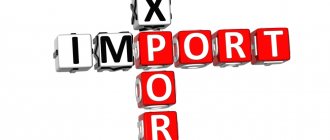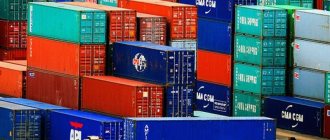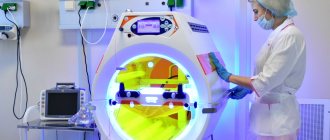- Features of purchasing medical equipment
- Procurement of medical equipment from a single supplier
- Justification for purchase
- New NMCC rules for medical devices
- Restriction on the purchase of medical equipment
- Model contract for the purchase of medical equipment
The state pays special attention to regulating the market for medical devices and equipment, so purchasing medical equipment is one of the most difficult types of procurement. In addition to the rules regulating the situation on the market of medical equipment and medical devices, it is also necessary to take into account special rules relating directly to procurement for government needs in this area. In addition, due to the complexity of the issue, not all issues are subject to detailed settlement and it is necessary to take into account the specifics of the equipment in each specific case.
Features of purchasing medical equipment
The Law “On the Protection of Citizens’ Health” No. 323-FZ of November 21, 2011 imposes state registration requirements for medical products, including any medical devices, instruments and their accessories.
Accordingly, the purchase of medical equipment is also possible only if it has passed state registration and is included in the register of Roszdravnadzor.
When making purchases that involve the installation and commissioning of medical equipment, customers are required to include in the documentation requirements that the contractors have the appropriate license.
When purchasing medical equipment, special requirements are also imposed on the content of technical and operational documentation of the manufacturer of medical software (Order of the Ministry of Health dated January 19, 2017 No. 11n):
— to justify the purchase;
— to the formation of the NMCC;
- to comply with the national regime.
In addition, when purchasing medical equipment, it is mandatory to use standard contracts.
To purchase medical equipment, in almost all cases it is necessary to conduct an electronic auction, with the exception of the following cases:
— with NMCC less than 500 thousand rubles. you can request quotes;
— with NMCC less than 600 thousand rubles. you can purchase equipment from a single supplier (and from 04/01/2021, purchases in an amount of less than 3 million are also possible, subject to purchases through the “electronic store”);
certain types of medical equipment, namely, orthopedic products and some types of prostheses are not included in the auction list in accordance with Government Order No. 471-r dated March 21, 2016 (OKPD codes 32.50.22.120, 32.50.22.121, 32.50.22.190).
Since last year, when purchasing certain types of medical equipment, it is possible to conclude a life cycle contract.
Accounting groups of medicines and medical devices.
In accordance with paragraph 117 of Instruction No. 157n [1], inventory items accounted for on account 0 105 01 000 include medicines, components, endoprostheses, bacterial preparations, serums, vaccines, blood and dressings, etc. What applies to medicines in healthcare institutions, explained in paragraph 1 of Instruction No. 747 [2] (applied to the extent that does not contradict Instruction No. 157n). These include:
– medicines; – serums and vaccines; – medicinal plant materials; - medicinal mineral waters, disinfectants, etc. For dressings - gauze, bandages, cotton wool, compress oilcloth and paper, alignin, etc. The definition of medicines, drugs and pharmaceutical substances is given in Art. 4 of Law No. 61 FZ[3] . In particular, the norms of this document refer to medicinal products as substances or combinations thereof that come into contact with the human or animal body, penetrate the organs and tissues of the human or animal body, and are used for the prevention, diagnosis, and treatment of disease. Pharmaceutical substances and medicinal preparations are classified as medicinal products. All medicines are introduced into civil circulation on the territory of the Russian Federation if they are registered by the appropriate authorized federal executive body (Article 13 of Law No. 61 Federal Law).
Thus, account 0 105 01 000 accounts for all medicines that are included in the State Register of Medicines.
Dressings refer to medical products, the definition of which is given in Art. 38 of Law No. 323 FZ[4]. The standards of this article classify as medical products any instruments, devices, instruments, equipment, materials and other products used for medical purposes separately or in combination. Their circulation on the territory of the Russian Federation is carried out subject to state registration. Recommendations for the use of medical devices are set out in the manufacturer’s documents.
Based on the above definition, in addition to dressings, this category also includes other consumables used in the provision of medical care. For example, syringes, infusion systems (devices for transfusion of solutions), venous catheters, tourniquets, gynecological glasses, etc. At the same time, according to the explanations of the Ministry of Finance given in Letter dated November 2, 2018 No. 02 05 10/79114, the acquisition of individual items of material reserves is carried out in including in accordance with the All-Russian Classifier of Products by Type of Economic Activity OK 034 2014 (CPES 2008), approved by Order of Rosstandart dated January 31, 2014 No. 14 Art. By virtue of this document, medicines and materials used for medical purposes belong to class 21. However, the list of products of this class does not include syringes, catheters and other consumables. They belong to class 32 (“Other finished products”) as instruments and devices used for medical purposes, not included in other groups.
Let us note that making a decision on classifying material inventories to the corresponding group of analytical accounting is within the competence of the accounting entity (letters of the Ministry of Finance of the Russian Federation dated 02.12.2016 No. 02 07 10/8036, dated 09.10.2014 No. 02 07 05/45503). In other words, if the founder makes a decision, then in all medical institutions under his jurisdiction, the same type of inventories (for example, syringes) will be accounted for equally (suppose, on account 0 105 06 000 “Other inventories”). An autonomous institution can independently make such a decision, but it must be agreed upon with the founder and this procedure must be formalized in its accounting policies.
Since all of the non-financial assets listed above are used for less than 12 months, for accounting purposes these medical products are classified as inventories. Medical products with a useful life of more than 12 months must be taken into account as part of fixed assets. As a rule, these are medical equipment and surgical instruments made of special metal. This, in particular, follows from clause 7 of the FSBU “Fixed Assets”[5].
Procurement of medical equipment from a single supplier
Purchases from a single supplier on the grounds provided for in paragraphs. 4.5 part 1 of Article 93 from 07/01/2020 can be carried out if the maximum purchase amount does not exceed 600,000 rubles (before that there was a limit of 300 thousand rubles)
From April 1, 2021, the purchase of medical equipment is subject to general procurement rules in accordance with Part 12 of Art. 93 of Law 44-FZ, when it is possible to conclude a contract with a single supplier through an electronic platform. The amount of purchases in this case is limited to 3 million rubles.
In the situation that developed during 2020-2021 in connection with the coronavirus pandemic and its recognition as a force majeure event, it became possible to purchase industrial and technical supplies, including medical equipment, from a single supplier on the basis of clause 9 of Art. 93 of Law 44-FZ if this is caused by the need to eliminate the consequences of the spread of coronavirus infection. The Ministry of Finance additionally indicated this in its letter dated March 19, 2020 No. 24-06-06/21324.
However, according to current practice, this does not apply to any purchases that will be made during the pandemic. It is necessary to prove a direct cause-and-effect relationship between the subject of the contract and the impact that the use of this equipment will have on the prevention or fight against the consequences of coronavirus infection.
Justification for purchase
In some cases, medical equipment is complex and high-tech. In this regard, a number of problems arise when creating documentation.
Many violations in the procurement of medical products are associated with the inclusion of technologically unrelated equipment in one lot.
The difficulty lies in the lack of clear criteria and an algorithm that would make it possible to unambiguously determine whether the equipment is technologically connected or not. Sometimes the possibility of sharing certain equipment is determined by subjective human factors (for example, the skills of medical staff).
Also controversial are the issues with the fact that customers create documentation in such a way that only equipment from a single manufacturer meets the requirements. Since the set of characteristics of complex equipment is often unique, there may indeed be no alternative on the market.
On the one hand, there should be no abuse on the part of the customer, but, on the other hand, the requirements for equipment should be such that this does not negatively affect the provision of services and the health of patients. In any case, the customer must be given a justification for why he is purchasing medical equipment or other medical products with certain characteristics and in a certain configuration.
History of creation
Until January 1, 2021, the functions of OKPD 2 were performed by a number of classifiers, such as:
- OKDP OK 004-93;
- OKPD OK 034-2007 (KPES 2002);
- OKUN OK 002-93;
- OKP OK 005-93;
- OKDP OK 004-93;
- OKPD OK 034-2007 (KPES 2002);
- OKUN OK 002-93;
- OKP OK 005-93.
In order to unify statistical forms and harmonize internal standards with international statistical standards by type of economic activity, a new classifier, OKPD 2, was introduced into the state standardization system in the Russian Federation.
New NMCC rules for medical devices
The procedure for determining the NMCC contract when purchasing medical devices is determined by Order of the Ministry of Health of the Russian Federation dated May 15, 2020 No. 450n.
It should be taken into account that this method of calculating the NMCC does not apply to the following goods:
— radio-electronic products if the customer has established restrictions on the admission of foreign radio-electronic products;
— for purchases within the framework of state defense orders;
— when purchasing foreign medical products, if they are included in the list of disposable plastic products for which admission restrictions are established (Resolution No. 102 of 02/05/2015).
Methods for determining NMCC vary depending on the type of medical device.
The method of comparable market prices is used to establish the NMCC of a unit of medical product and/or the NMCC when purchasing from a single supplier for technical means of rehabilitation (in accordance with Government Decree No. 2347-r).
For a number of cases of purchases from a single supplier, including if such purchases are carried out to eliminate the consequences of coronavirus infection under clause 9) part 1 of art. 93 of Law 44-FZ or, for example, for the needs of the penal system.
If state price regulation is established for a medical product, then the NMCC is determined by the tariff method.
To determine the price of a unit of goods based on data from the register of contracts, it is necessary to take into account at least three values obtained as a result of competitive procedures or procurement on the basis of Part 1 of Art. 93 of Law 44-FZ from a single supplier in the region where the customer is located or neighboring regions.
Also, when purchasing medical products and calculating NMCC, it is necessary to take into account the coefficient of variation. When the coefficient reaches 33%, it is recommended to conduct additional research.
Formulas for calculating NMCC take into account not only the price of a unit of a medical product, but also the use of consumables and maintenance during the warranty period of its operation.
Restriction on the purchase of medical equipment
The main acts limiting the access of medical equipment of foreign origin to government procurement are Order of the Ministry of Finance No. 126n dated June 4, 2018 and Government Decree No. 102 dated February 5, 2015.
The list of Order No. 126n includes goods with code 32.5 - medical equipment and instruments, including stents for coronary arteries and catheters. When concluding a contract in relation to goods of Russian origin (or origin of the EAEU), advantages are provided at the contract price in the amount of 15% of the price proposed by the participants - if, as a result of the auction, at least one of the goods is of foreign origin, then the contract will be concluded at a price of 15 % lower than what the auction winner offered.
Resolution No. 102 requires the rejection of applications containing foreign-made medical equipment. In particular, this applies to X-ray machines and fluorographs, mammographs and gamma cameras.
In addition, it should be taken into account that by Government Decree No. 617 of April 30, 2020, public procurement of a number of products if they are not produced in the EAEU countries (some orthopedic products, bandages) is also limited - the customer is ordered to reject applications for foreign-made goods if there is an alternative.
To confirm the origin of a medical product from the EAEU countries, it is necessary to provide a certificate of origin of goods in the ST-1 form (Order of the RF CCI dated April 10, 2015 No. 29).
Model contract for the purchase of medical equipment
By order of the Ministry of Health dated 15.10. 2015 No. 724n approved a standard contract for the supply of medical products.
Let us recall that in accordance with clause 16 of the Decree of the Government of the Russian Federation of July 2, 2014 No. 606, in order to apply a standard contract, it is necessary to simultaneously comply with all the indicators specified in the information card with the data characterizing a specific purchase. In this case, the values of GWS codes are taken into account (according to OKPD2, OKVED2, as well as KTRU), the size of the NMCC concluded with the supplier, and other indicators, if any, in the information card of the standard contract.
If the subject of your contract is medical products, the codes of which according to OKPD2 or OKVED are in the information card of the standard contract from Resolution No. 724n, then you are obliged to use the standard contract.
VAT: what code should be in medical device certificates
A 10% VAT rate applies to the sale of medical goods of both domestic and foreign origin. Such products include:
- medicinal products, including pharmaceutical substances, medicinal products intended for clinical trials of medicinal products, and medicinal products manufactured by pharmacies;
- medical products, with the exception of the most important and vital medical products, operations for the sale of which are exempt from taxation upon submission of a registration certificate for the medical product to the tax office.
Conditions for applying the reduced VAT rate
To apply a reduced VAT rate of 10% to medical products, two conditions must be met:
- first - availability of a registration certificate;
- second, this medicinal product must be included in the List of Medical Product Codes in accordance with the All-Russian Classification of Products (OKPD2), approved by Decree of the Government of the Russian Federation of September 15, 2008 No. 688.
The procedure for registering medical devices was approved by Decree of the Government of the Russian Federation dated December 27, 2012 No. 1416 “On approval of the Rules for state registration of medical devices.”
The form of the registration certificate for a medical device was approved by order of Roszdravnadzor of Russia dated January 16, 2013 No. 40-Pr/13.
About the special list
To apply a reduced tax rate, it is necessary that the goods sold correspond to the code determined by the Government of the Russian Federation.
The Government of the Russian Federation approves lists of codes for specific types of goods, the sale of which is taxed at a rate of 10%, in accordance with the All-Russian Classifier of Products and the Commodity Nomenclature of Foreign Economic Activity.
Thus, the list of these codes of medical products in accordance with the All-Russian Classifier of Products (OKPD2) was approved by Decree of the Government of the Russian Federation dated September 15, 2008 No. 688.
By Decree of the Government of the Russian Federation dated January 23, 2018 No. 50, changes were made to this list in terms of replacing the “old” OKP codes with OKPD2 codes. It is stipulated that these changes apply to legal relations arising from January 1, 2017.
Let us remind you that earlier (until 2021) OKP “OK 005-93” was installed. All-Russian Classifier of Products”, approved. Resolution of the State Standard of Russia dated December 30, 1993 No. 301.
From January 1, 2021, you need to use the All-Russian Classifier of Products by Type of Economic Activity OK 034-2014 (CPES 2008), approved by Order of Rosstandart of Russia dated January 31, 2014 No. 14-st.
Thus, starting from January 1, 2021, when considering the application of a VAT rate of 10% in relation to medical products, one should be guided by the Decree of the Government of the Russian Federation No. 688.
The Russian Ministry of Finance noted that regarding OKPD2 codes of types of medical devices that are not included in the list, it is recommended to contact the Russian Ministry of Industry and Trade on this issue.
Thus, for the lawful application of a tax rate of 10% in relation to certain types of medical goods, it is necessary that the product be in the specified list and have a registration certificate.





